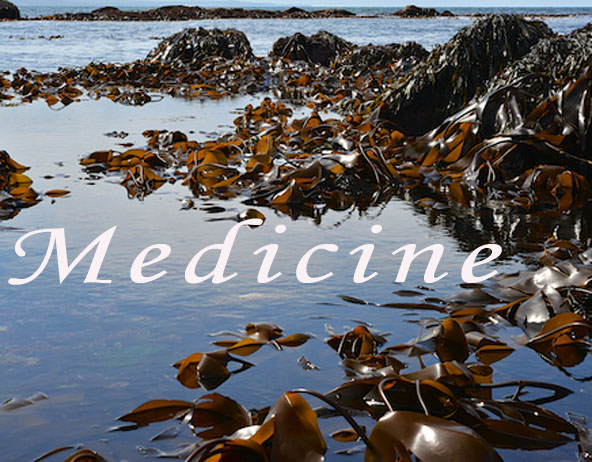
The oarweeds and wracks are used in various remedies because of the iodine that they contain, e.g. Fucus is employed in the form of an infusion in cases of goiter. Another way, used over many years, of giving the iodine is in the form of kelp pills or to use the kelp ash or charcoal, which medicinally is known as “Aethiops vegetablilis”. This was recommended by Mejer (1935) as a remedy for Basedow’s disease.
The great consumption of seaweed by the Japanese is reflected by the low incidence of goiter in the country, which is related to the high iodine content of the algae, especially in Kombu. The average consumption of dry seaweed per day per person in Japan is about 10g (Kirby, 1953). Kombu contains about 240ppm iodine and Nori 18ppm in contrast to other marine shell fish where it rarely exceeds 3 parts. Species of Laminaria have been imported into Malaya as a cure for goiter and it has been used in a New Zealand school (Moore, 1941).
Yarham (1944) says that the brown liquid which can be extracted from Ascophyllum is useful in the treatment of sprains, rheumatism and allied complaints. For those who want to lose weight there are special slimming teas which contain sea-weed iodine, usually extracted from one of the wracks. Hoffman (1939) suggests that the effect of these might be much stronger if Laminaria were used because the iodine content is greater. Laminaria powder was gigen by Chaveaux (1927) in France in cases of consumption in order to strengthen the body and help to overcome the disease.
We have this available on https://seatechbioproducts.com/human-nutrition
Seaweeds and their Uses- Chapman (233-234)